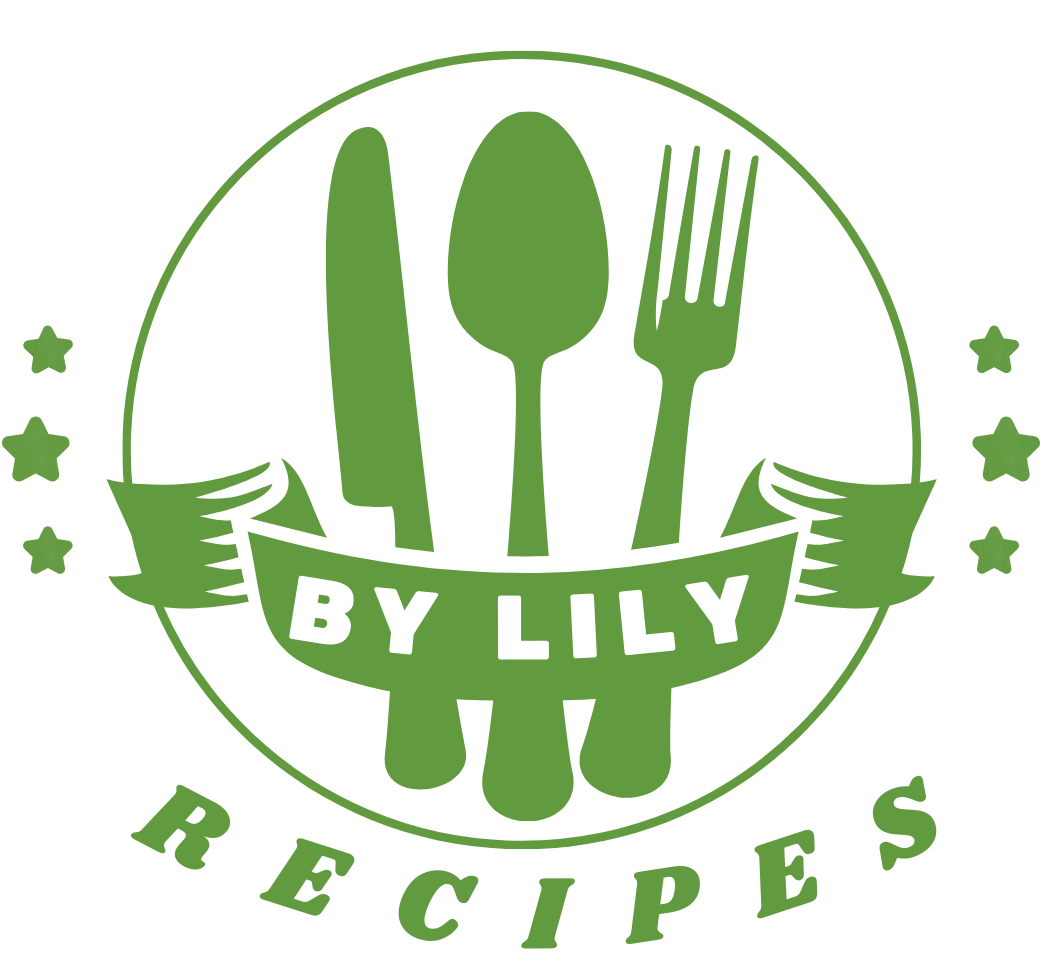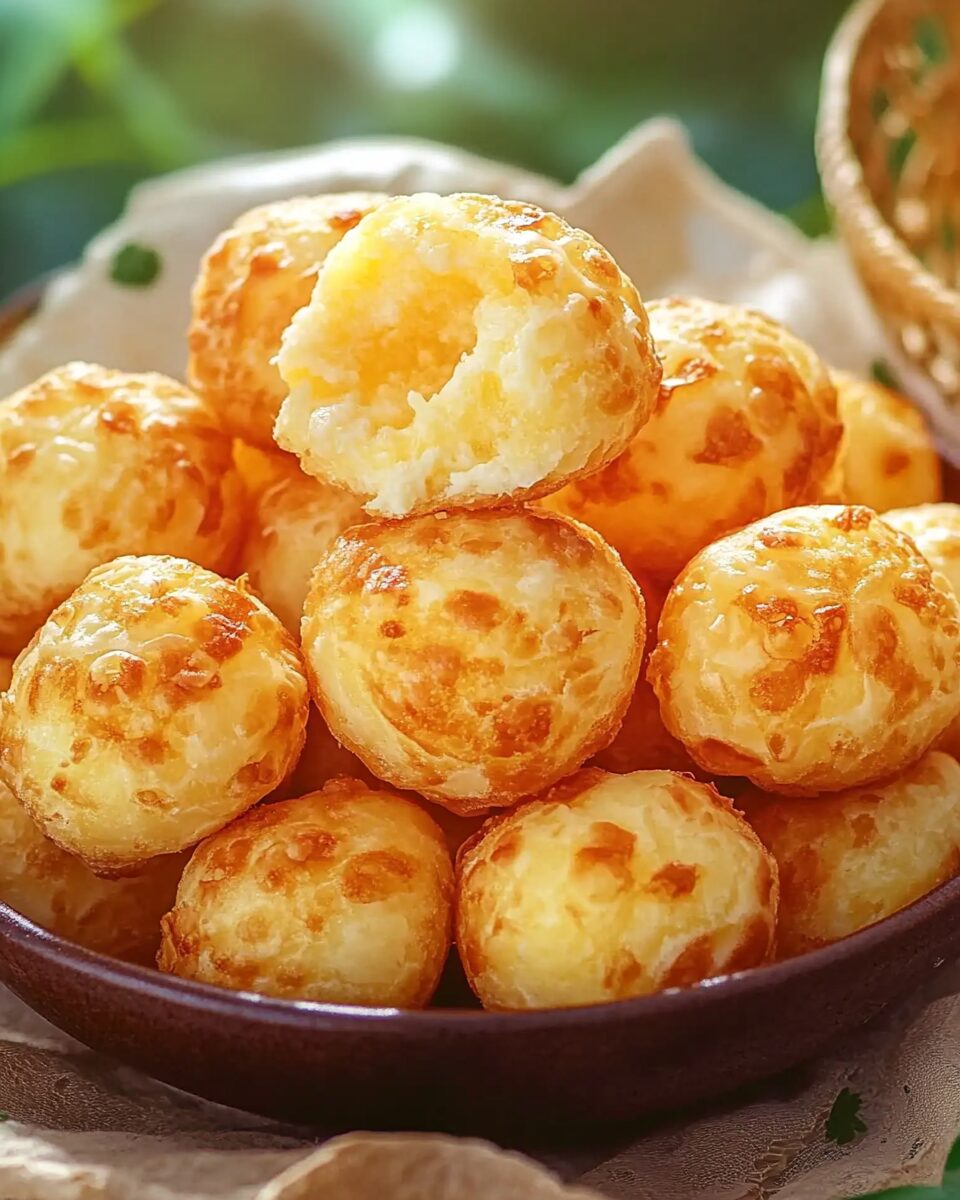Brazilian Cheese Puffs, also known as “Pão de Queijo,” are delicious, chewy cheese bread bites that are a popular snack in Brazil. Made with tapioca flour and cheese, they are naturally gluten-free and have a delightful crispy exterior with a soft, cheesy center. Perfect as a snack, appetizer, or even breakfast treat, these puffs are easy to make and incredibly addictive.
Full Recipe:
Ingredients
- 1 cup whole milk
- 1/2 cup unsalted butter (cut into pieces)
- 1 teaspoon salt
- 2 cups tapioca flour
- 2 large eggs
- 1 cup grated Parmesan cheese (or a mix of Parmesan and mozzarella)
Directions
- Preheat oven to 375°F (190°C) and line a baking sheet with parchment paper.
- In a medium saucepan, combine milk, butter, and salt. Heat over medium until the butter melts and the mixture just starts to boil.
- Remove from heat and immediately add tapioca flour. Stir vigorously until a sticky dough forms.
- Let the dough cool slightly for about 5 minutes.
- Add eggs one at a time, mixing well after each addition until the dough is smooth.
- Stir in the grated cheese until evenly combined.
- Scoop tablespoon-sized portions of dough onto the prepared baking sheet, spacing them about 2 inches apart.
- Bake for 20-25 minutes, until the puffs are golden and puffed up.
- Serve warm and enjoy!
Nutrients
- Calories: 85 kcal per puff (approx.)
- Carbohydrates: 8g
- Protein: 3g
- Fat: 5g
- Fiber: 0g
- Sugar: 0g
History and Cultural Significance
Pão de Queijo’s origins date back to the 18th century in the state of Minas Gerais, Brazil. During this period, wheat flour was not readily available, so cooks turned to cassava (a root native to South America) to make flour. This cassava flour, known today as tapioca flour, became the base for many traditional dishes, including Pão de Queijo.
Initially, these cheese breads were made without cheese—just a starch ball—but as dairy farming expanded in Minas Gerais, cheese became an essential addition. This evolution led to the creation of the modern Pão de Queijo, which Brazilians now enjoy daily, especially during breakfast or afternoon coffee breaks.
Unique Characteristics of Brazilian Cheese Puffs
What makes Brazilian Cheese Puffs truly unique is their texture. They achieve an incredible balance of crispiness on the outside and a chewy, stretchy, cheesy center. This comes from the use of tapioca flour, which behaves differently from wheat flour, creating elasticity and chew. The cheese, often Parmesan, mozzarella, or Minas cheese (a mild cheese from Brazil), infuses rich umami flavor, while the butter and milk add tenderness.
Another characteristic that stands out is their simplicity. The recipe contains only a handful of ingredients, all of which come together harmoniously. Despite the simplicity, the result feels indulgent—each bite delivering cheesy, buttery goodness that feels almost too luxurious for such a humble treat.
Why Pão de Queijo is Naturally Gluten-Free
One major reason Brazilian Cheese Puffs have grown in popularity outside Brazil is their gluten-free nature. Since tapioca flour (also called tapioca starch) is naturally derived from cassava root, it contains no gluten. This makes Pão de Queijo a perfect option for those with celiac disease, gluten intolerance, or anyone seeking gluten-free snacks that don’t sacrifice flavor or texture.
For people who often feel left out of bread-based dishes, Pão de Queijo offers a rare opportunity to enjoy bread-like texture without any wheat. Plus, it requires no complicated flour blends or stabilizers—just pure tapioca flour.
The Role of Tapioca Flour in Texture
Tapioca flour is not just a gluten-free replacement; it plays a key role in creating the iconic chewy texture of Pão de Queijo. When heated, tapioca flour gelatinizes, meaning it absorbs liquid and becomes stretchy and slightly sticky. This process gives the puffs their signature chewiness that wheat flour could never replicate.
The gelatinization process also allows the puffs to trap air pockets as they bake, leading to their characteristic hollow centers. This makes the puffs feel light and airy, even though they are incredibly filling thanks to the cheese and butter content.
Flavor Versatility and Customization
While traditional Pão de Queijo uses Parmesan or Minas cheese, the recipe is endlessly customizable. Different cheeses can be used depending on preference, availability, or desired flavor profile. For a stronger, tangier puff, aged cheddar or gouda can be added. For a milder, creamier version, mozzarella works well.
Additional flavor enhancements like herbs, garlic powder, or chili flakes can also be incorporated into the dough. This flexibility makes Pão de Queijo adaptable for different occasions—spicy for parties, mild for kids, or herbaceous for elegant appetizers.
Pairing Suggestions
Pão de Queijo pairs beautifully with various beverages and accompaniments. In Brazil, they are most often served with strong black coffee or cafezinho. The contrast between the bold coffee and the rich, cheesy bread creates a perfect harmony.
For non-coffee drinkers, they also pair well with tea or fresh fruit juices, especially tropical ones like passion fruit or guava. As part of a larger meal, they can accompany soups, salads, or Brazilian-style barbecue (churrasco). Their versatility makes them appropriate for breakfast, brunch, afternoon tea, or party platters.
Serving Occasions
Brazilian Cheese Puffs fit almost any occasion. They can be served as a quick breakfast on busy mornings, a satisfying afternoon snack, or as a crowd-pleasing party appetizer. They are also a great addition to lunchboxes, offering a gluten-free option for kids and adults alike.
In Brazil, they are often served warm straight from the oven, but they also reheat well. This makes them ideal for meal prep, as a batch can be made ahead of time and frozen. Whenever a craving strikes, they can be quickly reheated in the oven or air fryer for that fresh-baked taste.
Health Benefits and Dietary Considerations
While Pão de Queijo is undeniably indulgent, it does offer a few nutritional perks. Tapioca flour is naturally grain-free and free from allergens like gluten, nuts, and soy. Cheese provides protein and calcium, and butter offers fat for satiety.
However, due to the combination of cheese, butter, and starch, these cheese puffs are high in calories and should be enjoyed in moderation. For a lighter version, some recipes substitute part of the butter with oil or add grated vegetables like zucchini to the dough.
Global Popularity and Modern Adaptations
Although rooted in Brazilian culinary tradition, Pão de Queijo has gained international popularity. In countries like the United States, Japan, and Australia, it is now found in specialty bakeries and gluten-free cafes. Many supermarkets even carry frozen versions for quick at-home baking.
Modern adaptations also include using different flours (like cassava or arrowroot) and adding sweet fillings such as guava paste. Fusion versions have emerged, blending the traditional cheese puff with global flavors like curry, pesto, or bacon.
Conclusion
Brazilian Cheese Puffs, or Pão de Queijo, are far more than just a snack—they are a cultural icon, a gluten-free baking marvel, and a testament to the ingenuity of Brazilian cuisine. Their unique chewy texture, irresistible cheesy flavor, and adaptability make them a beloved treat both in Brazil and around the world.
Whether enjoyed with morning coffee, served at a festive gathering, or simply baked as a comforting homemade treat, Pão de Queijo delivers satisfaction in every bite. With their naturally gluten-free profile and simple ingredient list, they also represent a triumph of minimalism, proving that some of the most delicious things in life come from humble beginnings.
For anyone looking to expand their baking repertoire or explore authentic Brazilian flavors, Pão de Queijo is an essential recipe. It’s a delightful reminder of how food can bring cultures together—one cheesy bite at a time.






